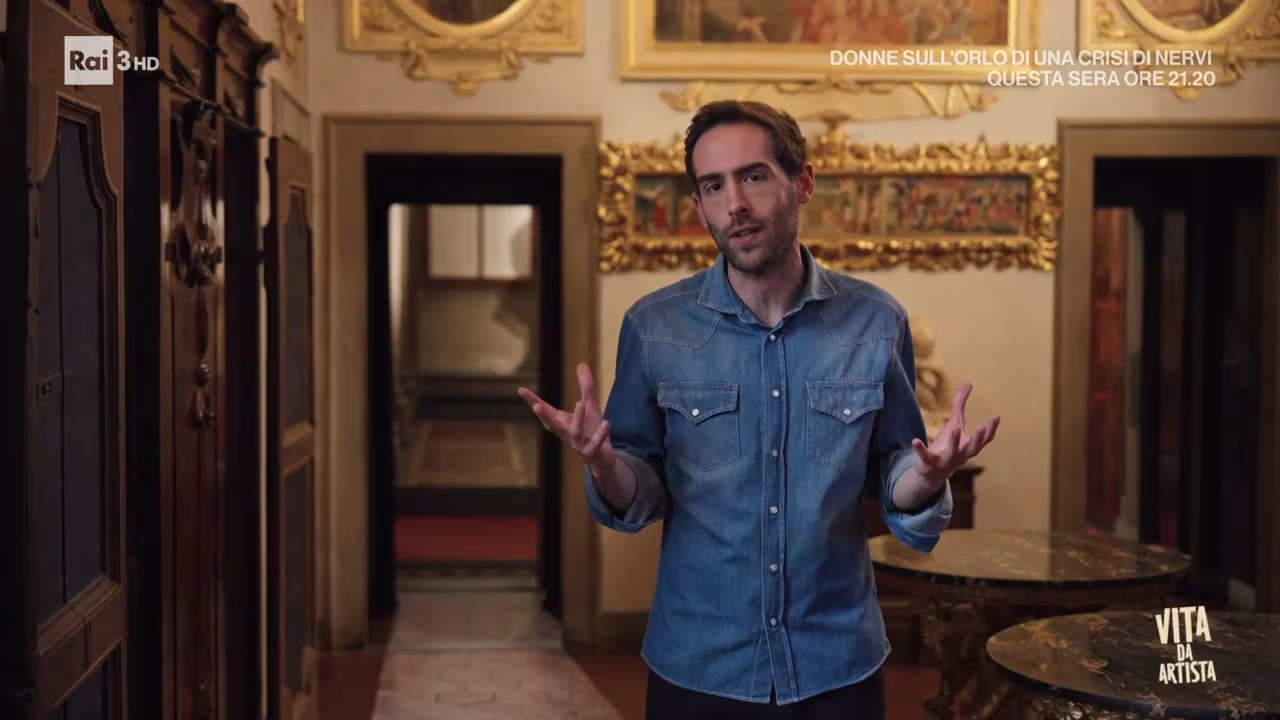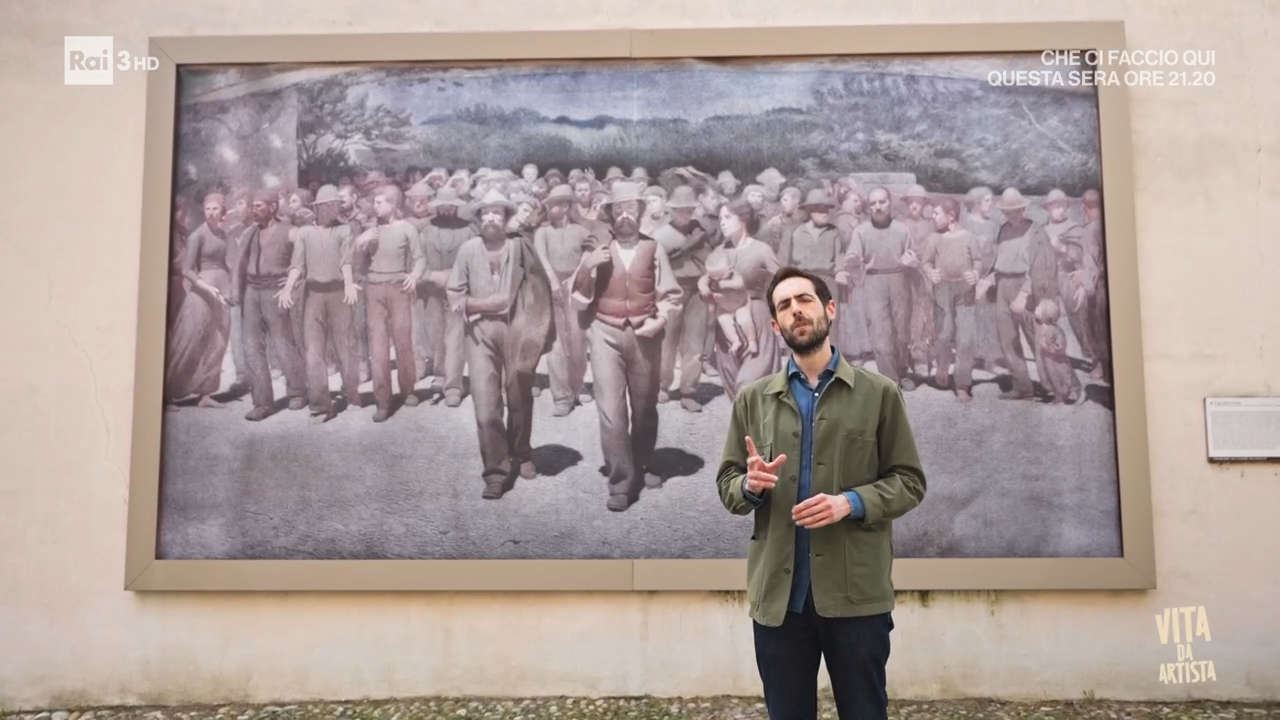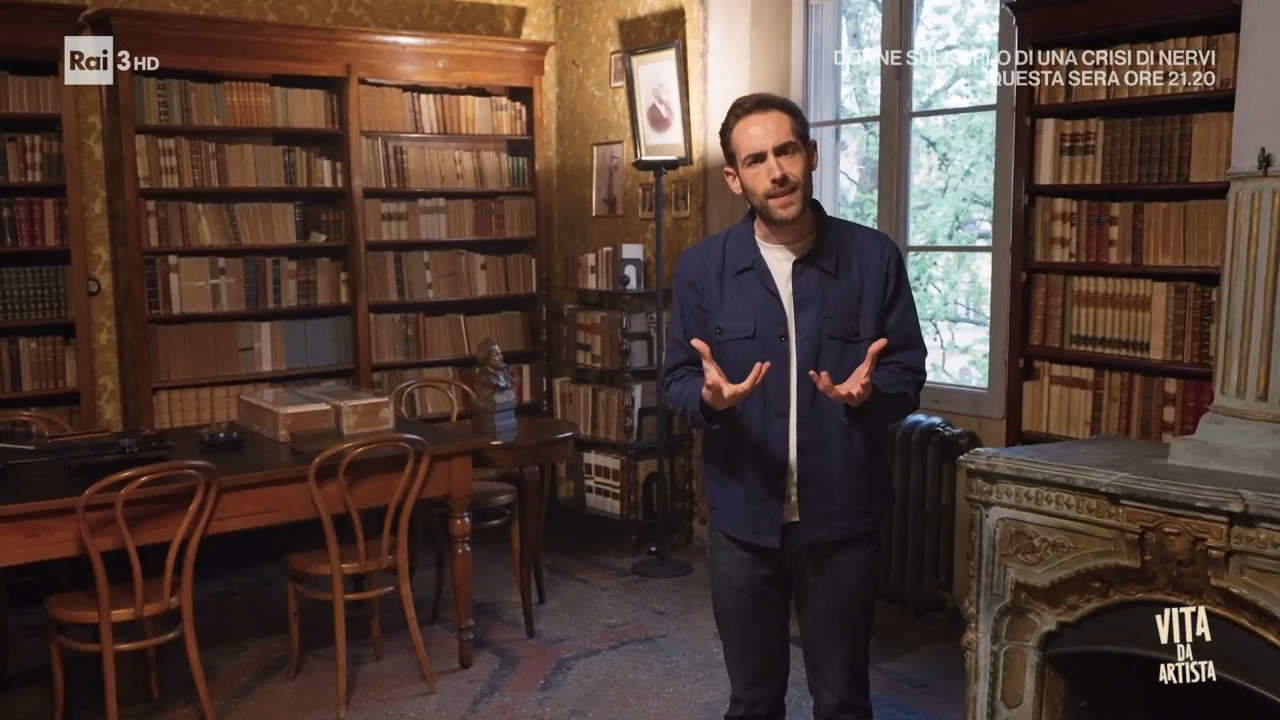The lack of an agile format dedicated to art has been felt for more than a decade on public television’s generalist networks. It has been felt at least since the closure of Passepartout, Philippe Daverio’s program that ran for about ten seasons and then was discontinued, more or less abruptly, perhaps in one of its periods of maximum success, amid protests from a large part of the public that clamored for its reinstatement. Almost fifteen years have passed and from Passepartout onwards Rai has not offered anything comparable, forcing art lovers to scan the offerings of Rai5 and above all leaving the public in search of something more immediate, more potable, unprotected. Of an entry level program, one might say, borrowing an expression from marketing jargon.
In some ways, it could be said that Daverio’s baton has been picked up by Jacopo Veneziani: his Vita da artista , which Rai3 recently finished broadcasting (ten episodes in which the young art historian introduced us to as many case-museums of artists and men of letters) is the closest thing to Daverio’s program that the public service has offered us in all these years. For several reasons: the similar duration(Passepartout would go on for half an hour, Vita da artista twenty to twenty-five minutes), the target audience (a wide audience and not necessarily an expert or enthusiast), a host who comes from the art world and therefore not a popularizer lent from other fields, the location (“mealtimes,” one would have said in the language of ads of yore: Passepartout on Sundays around lunchtime, Vita d’artista at dinnertime, evidently at Rai they think that art promotes the production of gastric juices, but that’s okay: theaccess prime time guaranteed to Veneziani is usually reserved for those programs that everyone watches, either by intention or by accident). And then, the host’s presence in the places being talked about, an unusual experiment for Veneziani, since we were used to following him on TV sitting in a chair talking about a work reproduced on screen, though not unheard of: we had seen him open doors and walk through secret passages on La7, and then, if I may be allowed a slightly narcissistic note, our masthead prides itself on having been the first to have thought of an on-site format for Jacopo Veneziani (in this case, with Finestre sull’Arte ’sPillole di Perugino series). The fact remains that, with the exception of our series which, needless to say, is nowhere near as good as Vita da artista, Veneziani had never had a program of his own, and consequently Rai took an interesting gamble. Good, meanwhile, the ratings: the ten episodes of Vita da artista were around a 5 percent share, approaching one million viewers. And for the rest? Is Veneziani capable of holding a program on his own? Can Vita da artista be considered the heir to Passepartout? Is it an experiment to be repeated? Is this the art-historical popularization expected of public service generalist networks?
Regarding the presenter, we feel we can say that, yes, Veneziani was ripe, and probably long ago, for a format all his own, and what Rai has sewn around him is probably ideal for him, as Passepartout was ideal for Daverio: a fresh, short-lived, unburdensome program in which the presenter leads the viewer directly into the places of culture. Certainly, Veneziani is more suited to a program of his own than to the spot spe eches that have been his typical TV signature so far. Perhaps, however, there is still room for improvement: the various gags sprinkled throughout the episodes (Veneziani greeting the audience by dropping his glasses on the floor, Veneziani colluding with us watching to steal a Michelangelo sketch from Casa Buonarroti, Veneziani opening a door and finding a cameraman behind it, and so on) seem almost always gratuitous and, above all, forced. Cringe, some would say. The production evidently wanted to leverage even the most exquisitely pleasing aspect of the character, when it would perhaps have been sufficient to go along with the composed and ironic character of the presenter rather than treading on excessive forcing: an obvious, conspicuous change of tone compared to what Veneziani had done not only in the Perugino Pills , which were designed for an audience of enthusiasts, who therefore do not have to be won over with gags (and would not have liked it), but also in the television programs in which he was a regular presence. Having smoothed out these excesses, one gets a calm, elegant, polite conductor, ideal for this type of program.



Many of course are the differences that divide Passepartout from Vita da artista. Beyond content, it is clear that Vita da artista was envisioned as a more pop, younger, fresher, and more liquid product than Passepartout, but this may not necessarily be the best choice, since, in order to achieve this apparent freshness (“apparent” because it is often harnessed for example, in the digressions on the works not preserved in the places Veneziani visits), it was necessary to level the content, which, especially in the episodes devoted to the literati, did not go much beyond anecdotal (in the episode on Carducci, for example, not a single verse of the poet was heard to be read, and instead there was a lot of insistence on his liaisons and marginal aspects of his biography: was this really necessary?). Certain episodes then seemed to us to suffer from several totally gratuitous digressions: again in the episode on Carducci, for example, a quick excursus on bears in the history of art, in which Veneziani lingered simply because the poet in his house had a souvenir in the shape of a teddy bear. Much better were the installments on artists, which never went into depth but at least offered some coordinates for understanding them (four of those visited by Veneziani: Canova, Pellizza da Volpedo, Michelangelo and De Chirico), always with a minimum framing of the context (on De Chirico, for example, some notion of what metaphysical painting was) and with some brief lunge on the works.
Those who expected, perhaps, a Rai5-style program will have been disappointed. And indeed, Vita da artista is not comparable to Rai5’s offerings, and the content to date does not even seem comparable to Passepartout , which managed to remain light but at the same time also dig below the surface. Vita da artista is an intentionally light-hearted program with little inclination for in-depth analysis, but there are several aspects to be positively evaluated. First, Veneziani brought ten little-known museums, ten not-so-obvious personalities, and ten interesting sites into a critical time slot: no small feat, especially considering that art-historical popularization on Rai had become fossilized on Alberto Angela and the usual topics (Pompeii, Rome, Van Gogh, and so on). It is not trivial to let an audience of non-experts, of non-experts, of non-enthusiasts know that Italy is dotted with house-museums that for the most part have been preserved as their ancient inhabitants left them, and where it is really possible to understand much about those personalities.
Next, it must be considered that this is now the level of television writing designed for the general public: productions carefully avoid taking risks; Veneziani, while endowed with the potential to do in-depth work (or even simply work à la Daverio) probably cannot deviate much from what productions glamorize for his character. Finally, it is a format that, with a few improvements (less forcing, a little more room for art and literature and less for biographism, the taking of a few risks to try todeepen a little, even at the cost of cutting the space of some guests who perhaps were not so essential, see Vezzoli in the episode on Canova) could really mark an interesting moment in the history of art-historical popularization on television. At the moment Life as an Artist seems to be a product in the very early season of its life, open to great potential for growth and development: the experiment, therefore, is to be continued.
Warning: the translation into English of the original Italian article was created using automatic tools. We undertake to review all articles, but we do not guarantee the total absence of inaccuracies in the translation due to the program. You can find the original by clicking on the ITA button. If you find any mistake,please contact us.